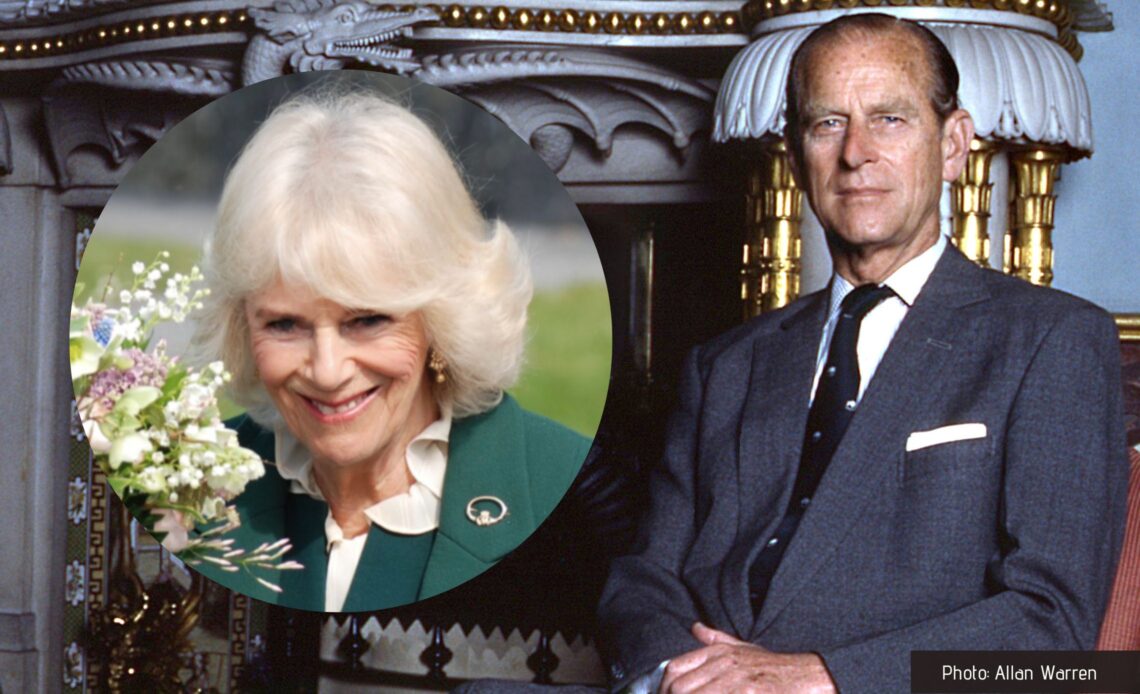
Despite the naysayers, upon the ascension of King Charles to the throne, his Consort – Camilla – became queen.
To avoid confusion following the very recent death of Queen Elizabeth II, many media organisations will continue to refer to Camilla as ‘Queen Consort’ for the foreseeable future.
However, just as was the case with The Queen Mother, Queen Mary and Queen Alexandra, Camilla will be known as queen, as is her rightful title as the wife of a king.
So why is it that the late Duke of Edinburgh was known merely as Prince Philip and not King Philip?
On the face of it, it seems bizarre, perhaps eve sexist, though in this post we’ll explain why exactly Prince Philip wasn’t king and why the wife of a king is always a queen.
Under English common law, a wife traditionally takes her husband’s name and rank upon marriage and as a title legally forms part of one’s name in most cases, titles within the Royal Family work in much the same way as if an untitled couple were to marry and the wife took her husband’s name as her own.
Perhaps the best example of this in action is with Prince Michael of Kent and his wife. Upon his marriage to the then Marie Christine von Reibnitz in 1978, she assumed the female form of his title and became Her Royal Highness Princess Michael of Kent.
Other titles in the Royal Family work on a similar basis. For example, the wife of the Duke of Sussex is known as the Duchess of Sussex. Had Prince Harry not been granted the Dukedom for his marriage, she would have become Princess Henry of Wales.
However, when a female Royal marries, the case is much different. If the woman’s title ranks higher than her husband’s already, she retains this title. This is the case for Her Royal Highness The Princess Royal. If she didn’t hold her own title, she would be styled as Lady Laurence as her husband is a knight though because knights rank below the Royal Family, Princess Anne retains her title.
The instance of Princess Anne also demonstrates how the use of titles by marriage is very much a one-way-street. A husband cannot generally take the male form of his wife’s title on marriage, whatever her rank.
It’s a quirk of common law that goes right the way to the top. Prior to acceding to the throne, The Queen held the title HRH The Duchess of Edinburgh which was the female form of her husband’s title, though as the title of Queen ranks higher than Duchess (and because the Sovereign cannot hold peerages and the like), she no longer used the title of Duchess of Edinburgh, whilst The Duke of Edinburgh – to whom the title was issued – continued without any change to his own title.
Whilst this is not the only reason why the husband of a Queen isn’t a King, it is certainly an important one.
There is also the issue of rank. Queen Victoria thought that the title of “Duke” was the ‘proper title’ for a holder of a title, which is why Her present Majesty is known as Duke of Lancaster and not Duchess.
Whether or not the status quo should be maintained in terms of titles is a matter which has reached right into Parliament on numerous occasions. A bill in the House of Lords at the moment, the Equality (titles) Bill seeks to give husbands of female peers their own courtesy title, though interestingly not one in parallel with their wife’s – rather they will receive the title of ‘The Honourable’ as things stand.
The issue of making the wives of Kings Princess Consorts to equalise the issue was discussed during the Succession to the Crown Act readings in the Commons though never made it into the final bill.

